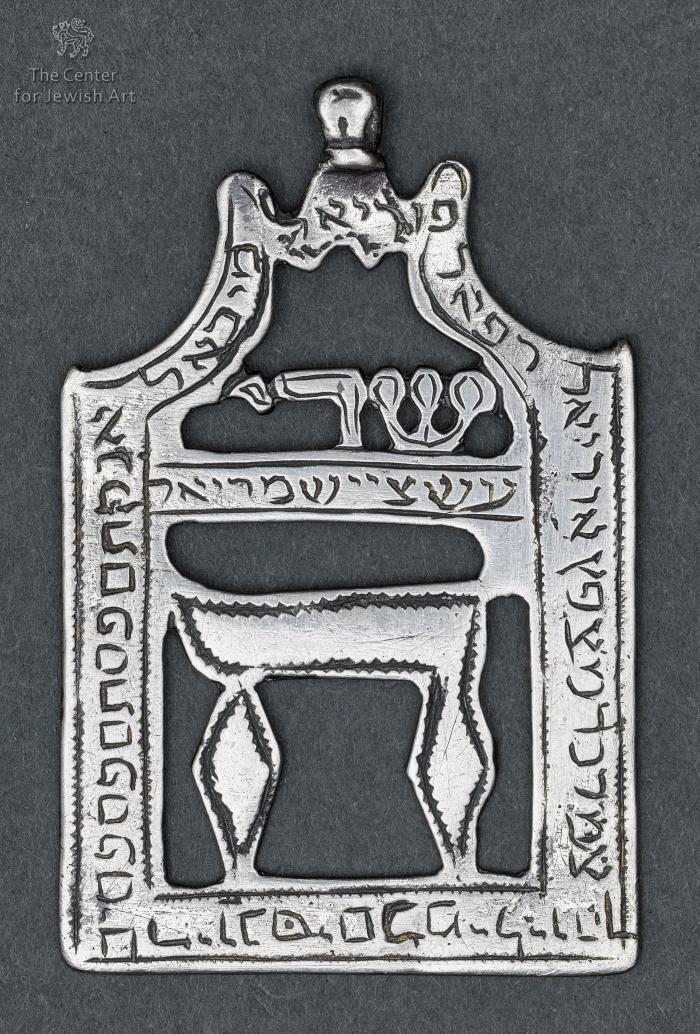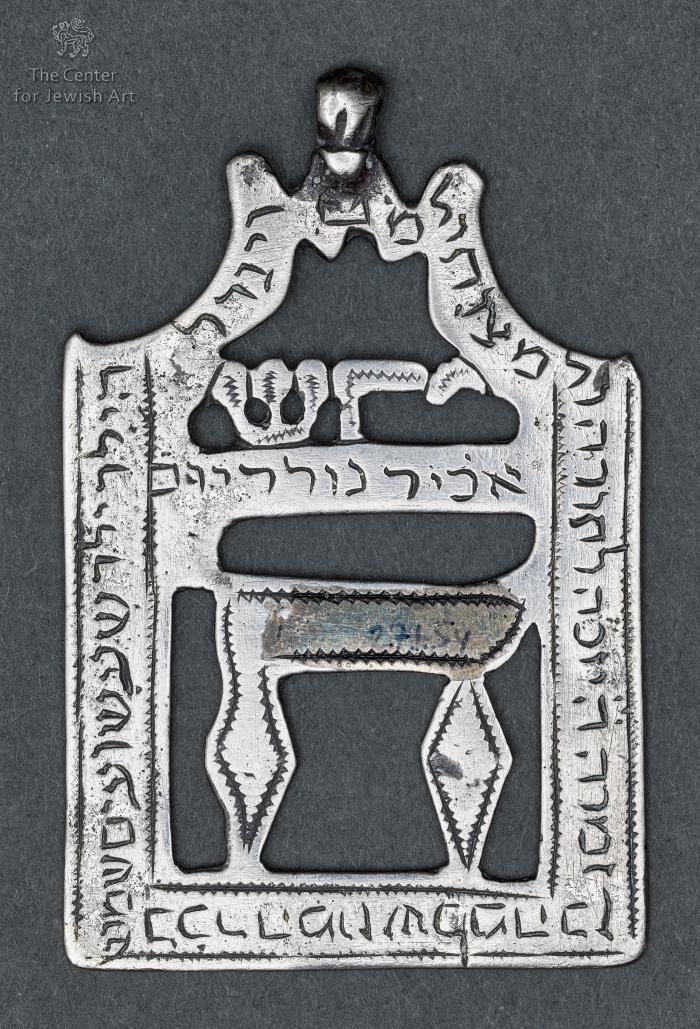Obj. ID: 35841 Amulet, Gibraltar, circa 1850

sub-set tree:
The following description was prepared by William Gross:
From earliest times, man has tried to protect himself from misfortune by the use of objects which he considered holy or otherwise (e.g., magically) potent. Amulets and talismans are items generally worn around the neck or wrist, carried in a pocket or purse or hung on a wall. They are meant to protect or aid those who carried or wore them. The Hebrew word for amulet, kame‘a, has the root meaning "to bind". Jewish amulets are usually comprised of texts (either letters or graphic symbols) that are inscribed on some sort of material; some may also contain plant matter or precious stones. The texts of amulets usually include holy names that are believed to have the ability to affect reality, along with incantations summoning angels or other magical powers. For the most part, an amulet has a specific purpose: to ease childbirth, facilitate recovery from illness, improve one’s livelihood, and so on, but in the modern world many are also made for general protection.
This very special amulet comes from Gibraltar. Both the cutout design and the prominent "heh" make this amulet unusual. One of the names of God, "Shaddai” is also presented in the cutout technique above the large "heh" while around the edges are inscribed the names of angels and magical formulas, including the 22-letter name of God. Since the Jewish population of Gibraltar was closely related to the Jews of Spanish Morocco, the style of their holy objects was also often related. This makes the current example even more outstanding because of its very unusual character. Amulets from Gibraltar are exceedingly rare.
Inscription: Shlomo ben Zimrah, Shadai Heh



